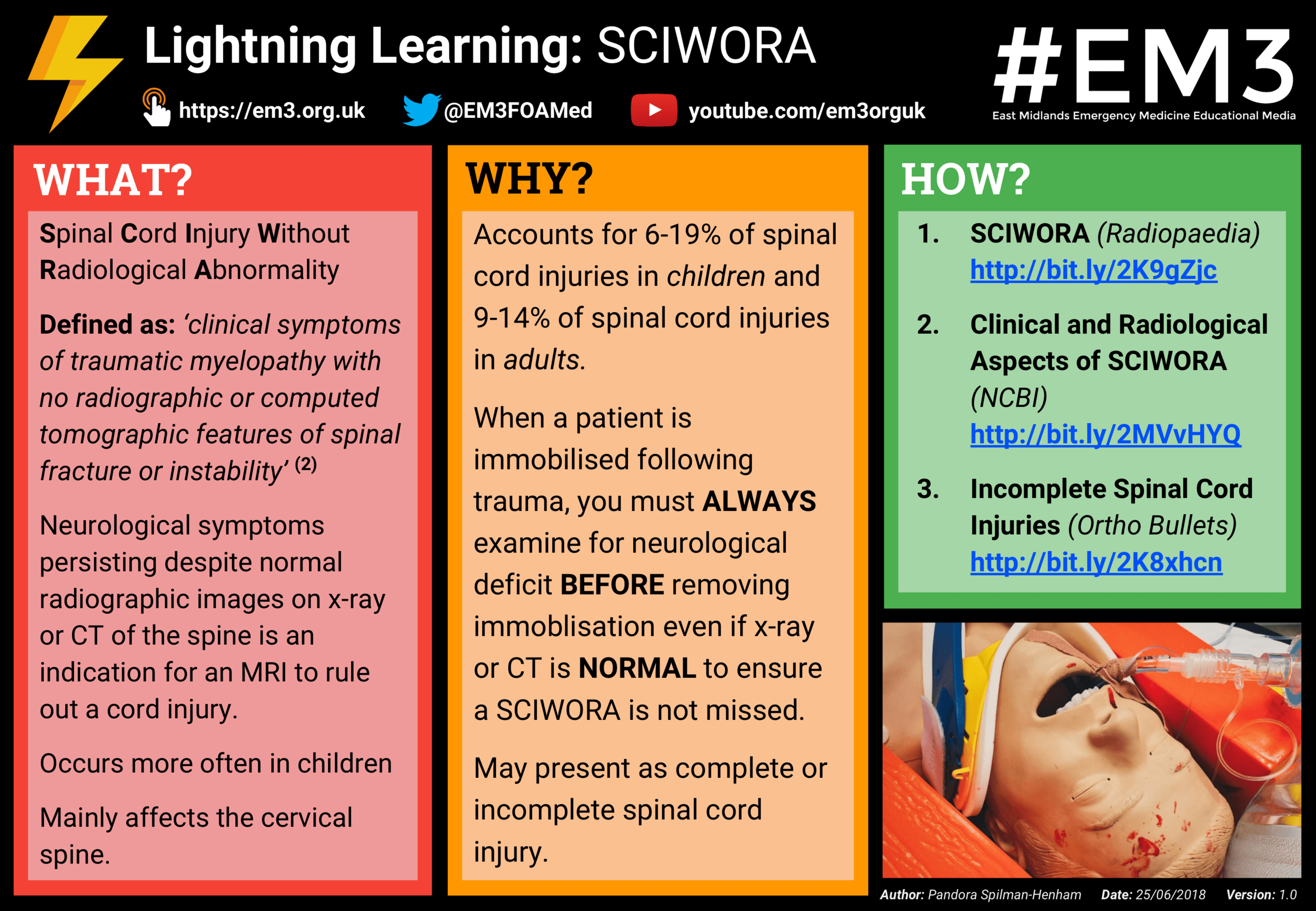Lightning Learning: SCIWORA
““SCIWORA: Spinal Cord Injury Without Radiological Abnormality accounts for 6-19% of spinal cord injuries in children, and 9-14% in adults.””
What?
SCIWORA: Spinal Cord Injury Without Radiological Abnormality
Defined as: ‘clinical symptoms of traumatic myelopathy with no radiographic or computed tomographic features of spinal fracture or instability’ (2)
Neurological symptoms persisting despite normal radiographic images on x-ray or CT of the spine is an indication for an MRI to rule out a cord injury.
Occurs more often in children.
Mainly affects the cervical spine.
Why?
Accounts for 6-19% of spinal cord injuries in children and 9-14% of spinal cord injuries in adults.
When a patient is immobilised following trauma you must ALWAYS examine for neurological deficit BEFORE removing immoblisation even if x-ray or CT is NORMAL to ensure a SCIWORA is not missed.
May present as complete or incomplete spinal cord injury.
Further Reading
- Radiopaedia: SCIWORA
- NCBI: Clinical and Radiological Aspects of SCIWORA
- Ortho Bullets: Incomplete Spinal Cord Injuries








